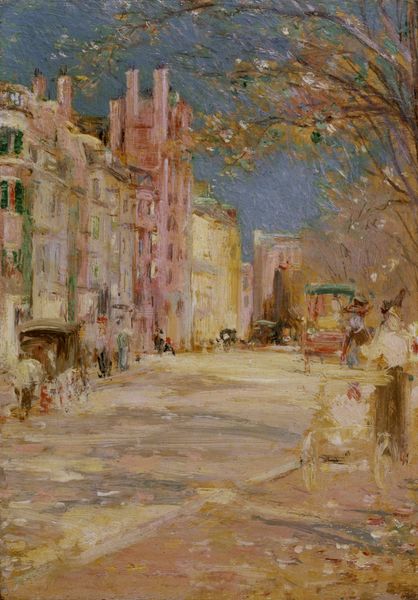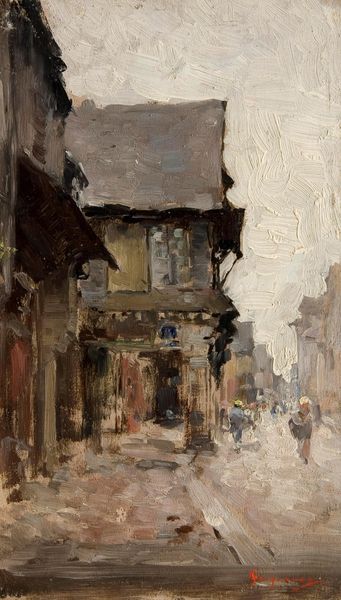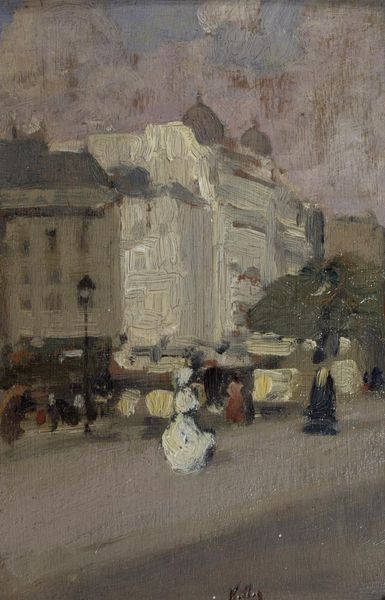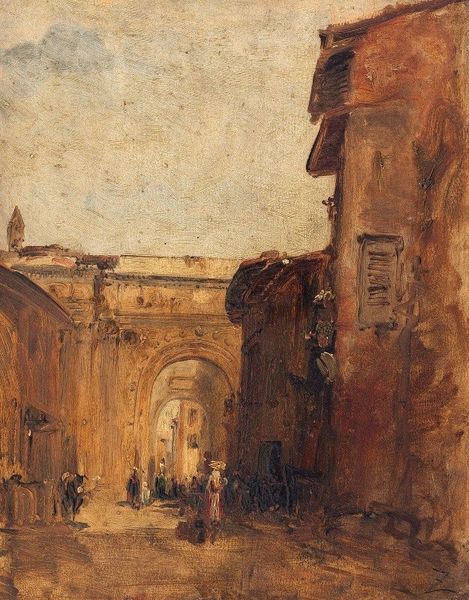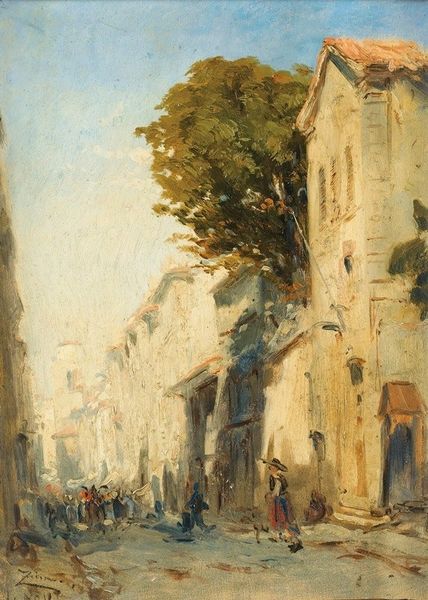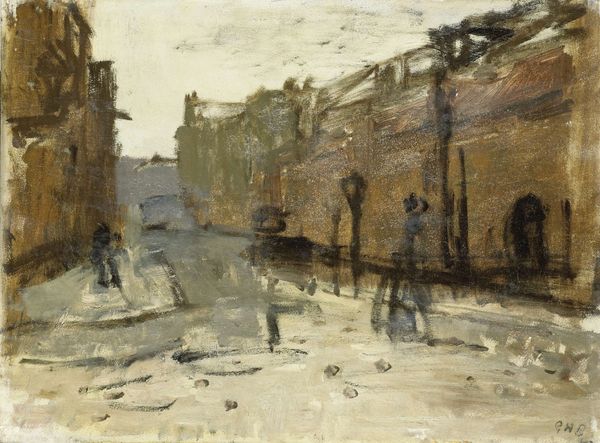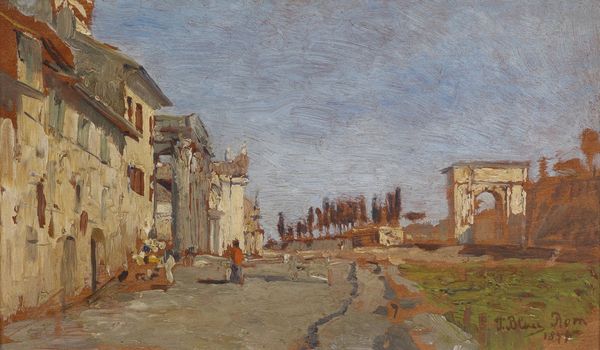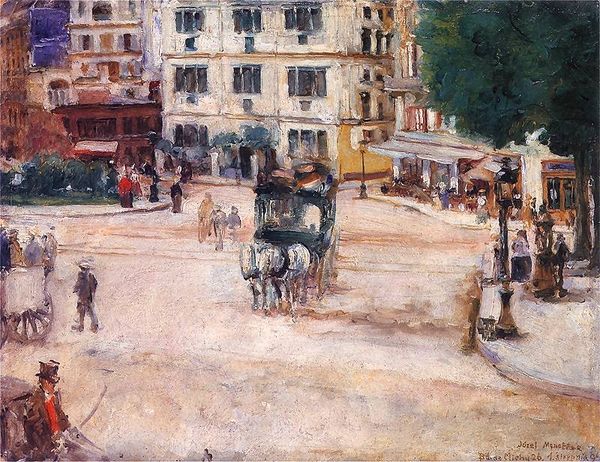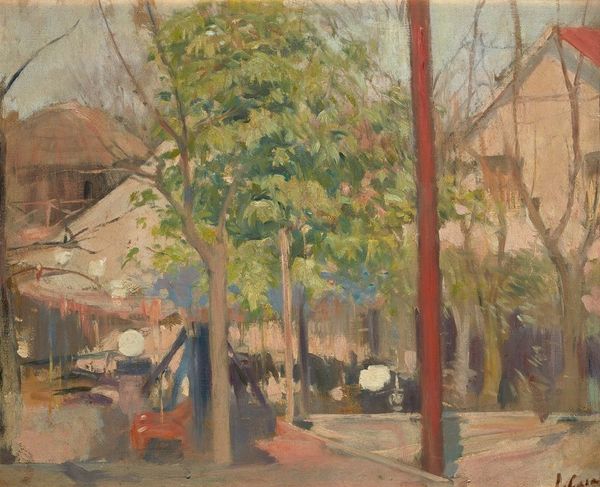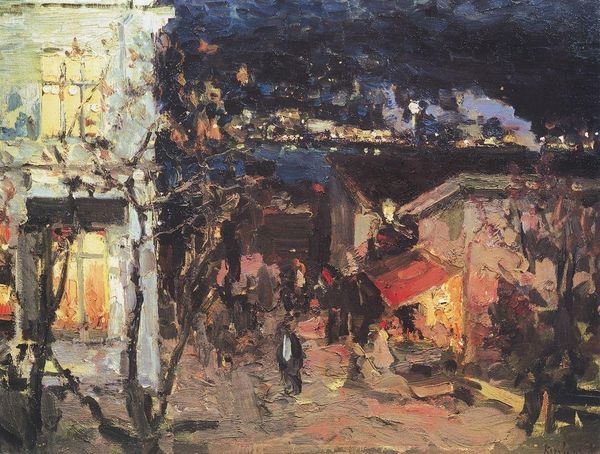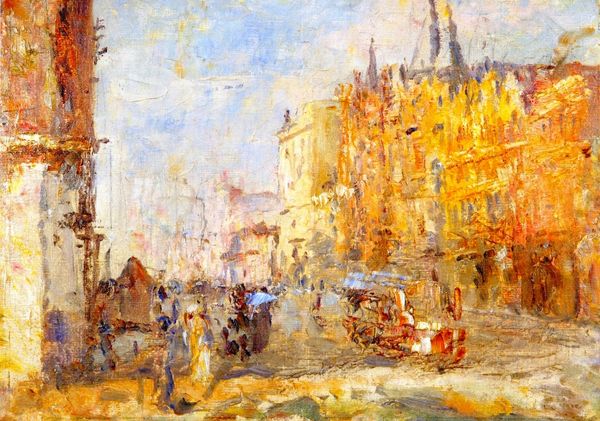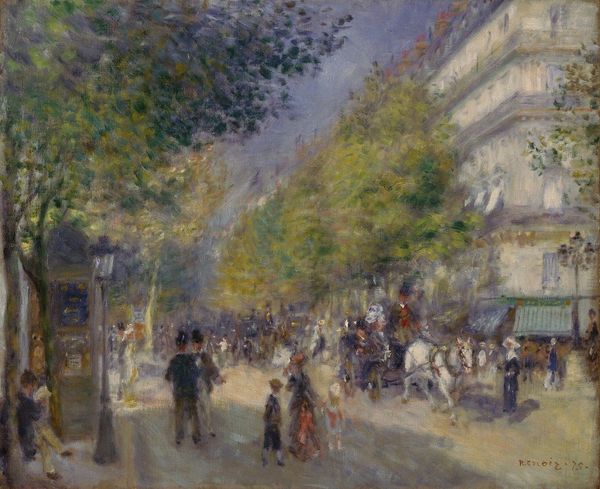
Copyright: Public domain
Curator: What a shimmering vision! Clarence Gagnon's oil painting, "Corner of the Doge's Palace," created around 1905, certainly captures the light and life of Venice. Editor: It does have a dreamlike quality. All those indistinct figures almost dissolving into the architectural backdrop make me consider the ephemerality of experience and human interaction within such grand, historical spaces. There’s something poignant about that. Curator: Exactly! The brushwork is so loose; you can practically feel the humidity. Given its date of production, it comes from the late bloom of Impressionism and it’s interesting how the city of Venice has lent itself to become the backdrop for different historical periods of painting. Editor: And the material choices contribute to this feel. Look at the creamy textures, the way the oil paint itself seems to mimic the very decay and softness of old Venetian plaster and its labor, highlighting how traditional techniques are adapted or reinvented in service to this impressionistic style. What sort of local or imported materials did Gagnon utilize for these colours, and would those be widely available to the other working artists or local vendors in Venice at that time? Curator: Those are all excellent considerations to explore around artistic materials and production. I find that Gagnon’s choice to focus on this specific corner creates a sense of intimacy, juxtaposing the imposing Doge's Palace with the daily life unfolding at its base. The figures become part of the architecture; both coexist and shape Venice's soul. Editor: Precisely. One is compelled to contemplate class divisions made physical through architecture. Those shadowed archways of the Palace feel like they obscure more than they reveal, suggesting those privileged spaces stand in opposition to the open common thoroughfare outside the building, the flow of its residents or servants. A reminder of societal power dynamics. Curator: Ultimately, "Corner of the Doge's Palace" offers us more than a postcard image. It's a rich and textured snapshot of a place and moment, isn't it? Editor: Indeed. Gagnon provokes contemplation of place, identity, and the narratives woven into the very fabric of Venice, prompting an evaluation of ourselves in relation to that complex cultural and political background.
Comments
No comments
Be the first to comment and join the conversation on the ultimate creative platform.

